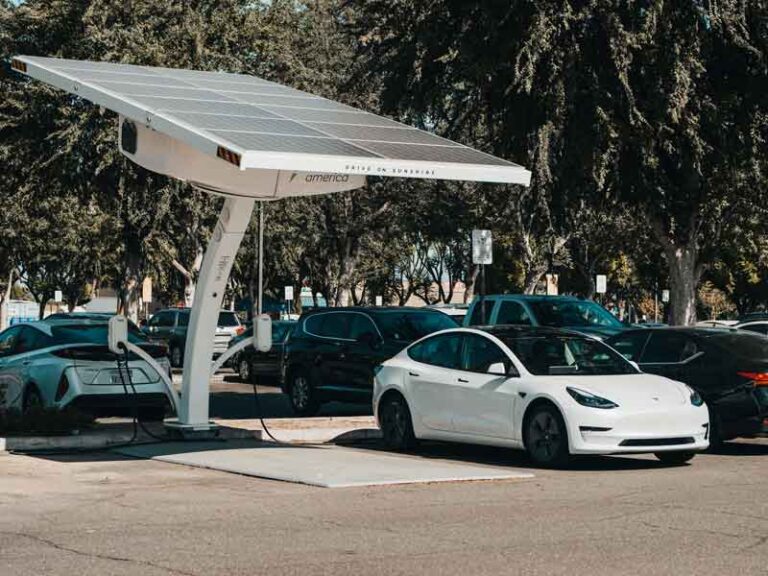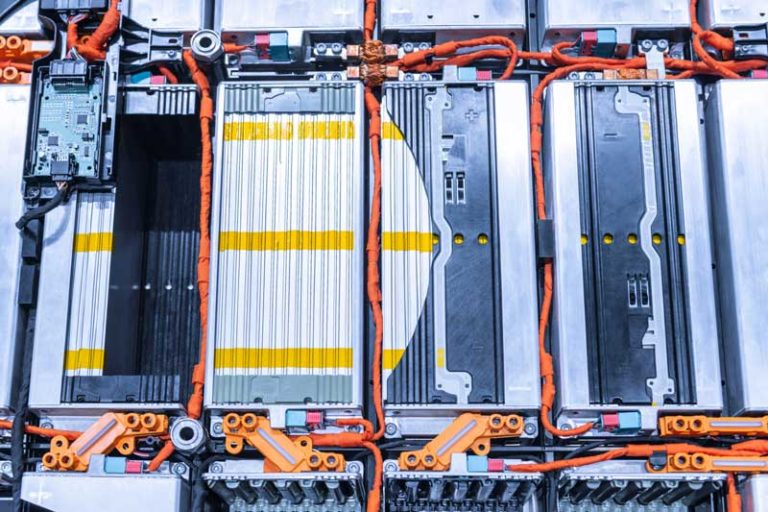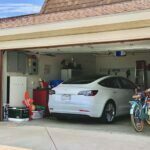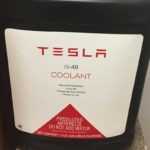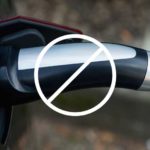Tesla’s introduction of electric vehicles has created a frenzy globally. With the exacerbation of climate change and its effects, most people prefer electric-powered cars to conventional cars. However, Tesla’s susceptibility to temperature changes remains its Achilles heel. So, what exactly is the ideal Tesla battery temperature range?
The ideal Tesla battery temperature range is 60F (15.6°C) to 80F (26.7°C). The Lithium-Ion battery found in Tesla electric vehicles functions optimally within this temperature range, allowing you to travel further per charge.
Read on to learn more about the Tesla range and how the various weather changes affect it. I’ll mainly cover the effect of temperature on the battery before briefly discussing the impact of rain.
- What is “Range” in a Tesla?
- Tesla’s Battery Range
- The Effect of Low Temperatures on the Battery Range
- The Effect of High Temperature on the Battery Range
- What is the Optimal Battery Temperature Range For a Tesla?
- FAQs
- What Does Battery Heating For Optimal Performance Mean?
- How Hot Do Tesla Batteries Get?
- What Does Preconditioning The Battery In Electric Vehicles Mean?
- Distinctions Between Battery Heating and Preconditioning.
- Why Is My Tesla Battery Draining So Fast?
What is “Range” in a Tesla?
Range refers to the distance a Tesla can cover on a single charge. The vehicle will display the battery range as the remaining distance you can cover or a percentage of the remaining battery. This way, it’s easier to determine how far you can go with the Tesla before having to recharge it.
The impressive battery range is a competitive edge for this modern range of cars. If you charge your vehicle overnight, rarely will you experience a problem of running out of power, especially if you are driving for a short distance.
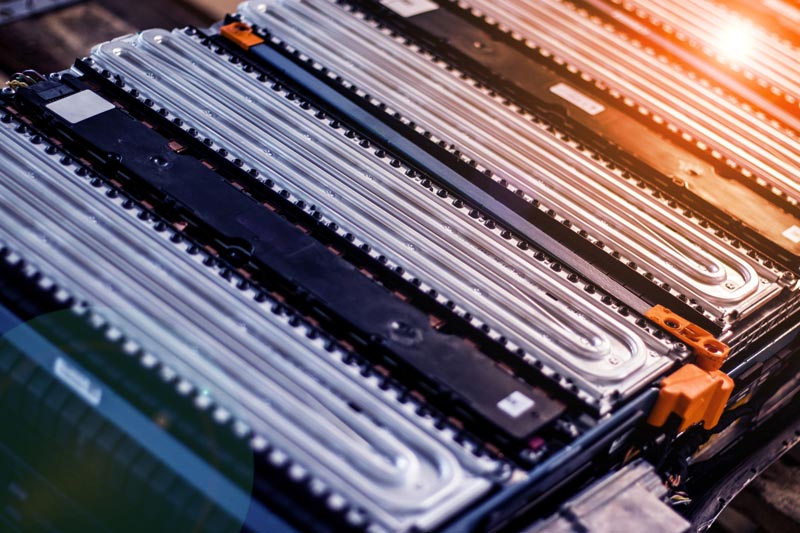
Tesla’s Battery Range
A single charge on a Tesla model can last you at least 262 miles (421.64 km). However, this range does not apply to all vehicles since battery range is a factor of:
- Car model: Tesla’s Model 3 is the cheapest electric vehicle in the market. This is because the car comes with a smaller internal battery. A bigger battery means more mile range. It also means a pricier car.
- Battery size: As mentioned, battery size affects the distance you can commute on a single charge. For example, the Model S Long vehicle has a bigger battery, and with a single charge, you can drive for 405 miles (651.784 km).
- Driving technique: If you are an adrenaline junkie and like to drive fast, your battery range will deplete faster.
Driving at reduced speeds increases your battery range. Other driving styles that can drain your battery levels are:
- Short trips
- Driving uphill
- Stop-and-go driving
If you’re traveling long distances, estimate the distance to the nearest charging station from your vehicle. Using this information, you can alter your driving speeds so that your battery doesn’t run out before getting to the charging station.
The Effect of Low Temperatures on the Battery Range
Extreme weather conditions can significantly reduce your Tesla’s EV battery range. Tesla owners driving in cold conditions tend to experience reduced battery ranges, meaning they cover fewer miles on a single charge.
Low temperatures reduce the battery range. A temperature drop slows down the physical and chemical reactions that power batteries, effectively extending charging periods and reducing the range.
Here’s a YouTube video with more details:
The Tesla Battery Management System
To protect your vehicle’s battery life, the battery must be above freezing before charging. To ensure this, the Tesla models come equipped with a temperature regulation system that draws energy from your vehicle to raise the battery temperature from freezing point.
Teslas automatically activate this thermal management system even when they’re not plugged in. While this system protects the battery, it does so at the expense of the range.
I wrote a related article and explained How Far Electric Cars Will Go in the Future. I also went into detail and explained all the current and coming tech. Check it out!

The Science Behind Lithium Plating
Typically, the negative anode made of lithium plating receives the charge in ions when the battery is charging.
Under cold conditions, the flow of ions through this node occurs slowly, creating an internal battery resistance. The slow movement of ions can also lead to a build-up of lithium, causing metallic plating.
The Effect of High Temperature on the Battery Range
We’ve already seen that cold weather reduces the rate of physical and chemical reactions in the battery. While high temperatures don’t do exactly that, they aren’t ideal for your battery either.
Summer weather can lead to faster degradation of your battery since the reactions take place at a quicker rate. Therefore, driving in the heat will significantly reduce your battery range.
What is the Optimal Battery Temperature Range For a Tesla?
The optimal battery temperature range for a Tesla is 60F (15.6°C) to 80F (26.7°C). That’s because Teslas use a Lithium-Ion, which typically performs best in this temperature range.
To give you a better idea of how much the range changes with temperatures here’s a table summarizing the findings of a recent experiment by AAA, as reported by Marketwatch:
| Car Model | .2017 Tesla Model S 75D |
| Standard range at 75°F(23.9°C) | About 239 miles per charge |
| Decrease in range at 20°F (-6.66667) with cabin heater on | 41% |
| Decrease in range at 20°F (-6.66667) with cabin heater off | 12% |
| Decrease in range at 95°F(35°C) with cabin AC on | 17% |
| Decrease in range at 95°F(35°C) with cabin AC off | 4% |
FAQs
Can Teslas Run Well in the Rain?
How Does Rain Affect Range In a Tesla?
As a result, the vehicle uses more power to move through space in such conditions, which reduces the range.
Think of it this way; when you drive your car when it’s not raining, it only needs to overcome air resistance to move forward. Rain adds extra resistance in the form of millions of droplets crashing against the car as it moves.
Since water is heavier than air, the additional resistance is significant enough to affect your range.
What Does Battery Heating For Optimal Performance Mean?
Let’s talk about battery heating for optimal performance in your Tesla. Picture this: you’re all set for an epic electric adventure, and you want your Tesla’s battery to perform at its absolute best. That’s where battery heating comes into play.
When we talk about battery heating, we’re referring to a process that warms up the battery pack in your Tesla. Why, you might ask? Well, batteries, just like us humans, prefer to operate in their happy temperature range. When the battery is warm, it’s able to deliver power more efficiently, allowing for enhanced performance and range.
In colder climates or during chilly weather, the battery can be affected by the temperature. Lower temperatures can cause the battery’s performance to take a bit of a hit, resulting in reduced range and slower charging speeds. That’s where battery heating steps in as the hero of the story.
Tesla’s intelligent systems are designed to monitor the battery’s temperature and, if needed, activate the battery heating process. This can happen when you’re about to embark on a long journey, initiating preheating to ensure your battery is cozy and ready to deliver optimal performance.
By gently warming up the battery, Tesla ensures that it’s operating within its ideal temperature range, allowing for efficient power output and maximizing your driving experience. It’s like giving your battery a warm hug to get it in the mood for an electrifying adventure.
Now, you might be wondering, how does this battery heating magic happen? Well, Tesla’s engineering wizards utilize various methods, such as using the car’s internal heating system or dedicated heating elements within the battery pack itself. The goal is to bring the battery to its ideal temperature before you hit the road.
It’s important to note that Tesla’s battery heating is an automatic process that occurs behind the scenes. You don’t need to manually trigger it or worry about the details—it’s all taken care of by your Tesla’s smart systems. So, when you hop into your Tesla and start your journey, rest assured that the battery has been prepped and warmed up for optimal performance.
How Hot Do Tesla Batteries Get?
Tesla batteries are designed to be pretty cool, and by cool, I mean they’re engineered to operate within a specific temperature range to ensure optimal performance and longevity.
You might be surprised to learn that Tesla batteries can get quite toasty under certain conditions.
During regular operation, Tesla batteries tend to operate within a temperature range of approximately 68 to 113 degrees Fahrenheit (20 to 45 degrees Celsius). These temperatures are considered ideal for maintaining the battery’s efficiency and overall health.
The optimal temperature range for a Tesla battery is 60F (15.6°C) to 80F (26.7°C).
Now, just like us humans, batteries don’t particularly enjoy extreme temperatures. When the temperature drops below freezing or climbs to scorching heights, Tesla’s smart systems kick into action to keep the battery in its happy zone.
In colder temperatures, Tesla vehicles employ a battery thermal management system that helps regulate the battery’s temperature. It might warm up the battery using internal heating systems or even utilize energy from the charging process itself to ensure the battery stays cozy and ready to deliver power when you need it.
On the flip side, during hotter temperatures, Tesla’s cooling systems kick in to prevent the battery from overheating. These cooling mechanisms can include liquid cooling or even utilizing the car’s air conditioning system to maintain the battery’s temperature within the optimal range.
What Does Preconditioning The Battery In Electric Vehicles Mean?
Preconditioning is like giving your Tesla’s battery a head start, priming it for optimal performance and efficiency. It’s a clever feature that allows you to prepare your electric chariot before you even step foot inside.
So, here’s the deal: when you engage in preconditioning, you’re essentially telling your Tesla to take care of the battery’s temperature and condition while it’s still plugged in and connected to a power source. Think of it as a warm-up routine for your Tesla’s battery, getting it ready to conquer the road with gusto.
Preconditioning serves a few key purposes. First and foremost, it helps regulate the battery’s temperature, especially during extreme weather conditions like when there is snow in winter. Just like how you’d warm up or cool down a room before you enter, preconditioning ensures that the battery is in the ideal temperature range for optimal performance. This way, your Tesla is all set to deliver maximum range and power as soon as you hit the road.
But that’s not all! Preconditioning also helps to make your driving experience more comfortable. When it’s cold outside, activating preconditioning can warm up the cabin and defrost those icy windows, so you’re greeted with a toasty interior when you hop in. Likewise, in scorching heat, preconditioning can cool down the cabin, making your entry a refreshing one.
Distinctions Between Battery Heating and Preconditioning.
Battery heating and preconditioning are two different processes that have similar goals – to keep the battery in its optimal temperature range. However, they operate under different circumstances.
Battery heating is a built-in mechanism that automatically kicks in when the battery temperature goes below a certain level. This happens regardless of whether the vehicle is in use or parked and is designed to protect the battery from extreme cold which can harm the battery’s performance and longevity. However, the system is smart enough not to drain your battery completely, it will maintain a balance between the health of the battery and the charge level.
Preconditioning, on the other hand, is a manual process that you can trigger using your Tesla mobile app or the car’s touchscreen. This prepares your car’s battery and cabin for your journey ahead, especially in extreme weather conditions. It helps to heat or cool the car’s battery and cabin to the optimal temperatures for comfort and efficiency.
Battery heating happens automatically, but it’s not likely to use up most of the charge overnight. And preconditioning is a separate feature that needs to be manually initiated, which is intended to be done shortly before starting a journey so the battery and cabin are at optimal temperatures, and thus it will not deplete the battery unnecessarily.
To learn more about Tesla Preconditioning, check out this helpful article that I wrote. You’ll find the best basics of preheating and preconditioning.
How To Precondition Tesla Battery From the App
To precondition your Tesla from the Tesla app, open the app and tap “Climate” and then “Turn On.”
Note that if temperatures are extremely cold, you can also ask your Tesla to defrost by tapping “Climate” and then “Defrost Car.”
Do I Need to Precondition Tesla Battery In Summer?
Preconditioning the battery in the summer is not as crucial as it is in colder temperatures. However, there are still some situations where it can be beneficial and enhance your overall driving experience.
One scenario where preconditioning can come in handy during the summer is if your Tesla has been parked in direct sunlight for an extended period. We all know how scorching hot a car can get when it’s been baking under the sun.
In such cases, activating preconditioning before you enter the vehicle can help cool down the cabin and make your drive more comfortable.
Another situation where preconditioning might be useful is if you have a preference for a specific cabin temperature. By engaging preconditioning before you get in your Tesla, you can ensure that the interior is pleasantly cool and inviting, especially if you’re in an area with high temperatures.
However, it’s worth noting that the battery itself is less sensitive to heat compared to extreme cold. Tesla’s battery management system is designed to monitor and regulate the battery’s temperature, ensuring it remains within the optimal operating range even in hot weather conditions.
So, in terms of the battery’s performance and health, preconditioning is not as critical during the summer as it is during colder months.
Ultimately, preconditioning in the summer is more about personal comfort and preference rather than a necessity for battery optimization.
Why Is My Tesla Battery Draining So Fast?
First things first, let’s check if there are any power-hungry culprits draining your battery unnecessarily.
Take a look at your Tesla’s settings and ensure that there aren’t any energy-intensive features running in the background. For example, disabling power-consuming functions like sentry mode or always-on climate control when you don’t need them can help preserve your battery’s charge.
Next, consider your driving habits. Aggressive acceleration, high speeds, and frequent stops and starts can have an impact on your energy consumption.
Remember, just like with a traditional car, more spirited driving can lead to increased energy usage. So, if you’ve been channeling your inner speed demon, it’s worth considering adjusting your driving style to maximize efficiency and extend your range.
Extreme weather conditions can also play a role in your battery’s behavior. In cold weather, the battery’s capacity might temporarily decrease, resulting in faster drain.
Similarly, in hot weather, the use of air conditioning to keep the cabin cool can impact energy consumption. Keep in mind that the battery management system works to maintain the optimal temperature, but extreme conditions can still affect overall efficiency.
Now, let’s talk about vampire drain. No, not the kind you find in movies! Vampire drain refers to the small amount of power your Tesla consumes while it’s idle. It’s normal for electric vehicles, including Teslas, to experience a gradual drain over time when not in use.
However, if you notice a significantly faster drain, there might be some underlying issues that require attention. In such cases, it’s advisable to reach out to Tesla’s customer support or visit a service center for a thorough inspection.
Lastly, it’s important to keep in mind that battery performance can naturally degrade over time. As your Tesla ages, its battery capacity might gradually diminish, resulting in shorter ranges and faster drains.
If you suspect this could be the case, contacting Tesla’s support team or scheduling a service appointment can provide you with more detailed insights into your battery’s health and possible battery degradation.
Check out these 20 great gift ideas for yourself or a Tesla fanboy.
Contact Us if you have any questions or queries.


